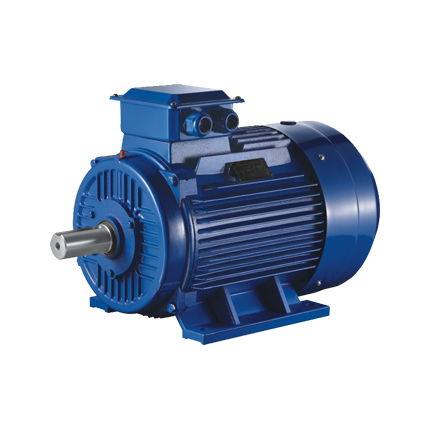Summary:The YE3 three-phase motor has two main parts: rotor and stator. The two parts are equally spaced around the rotor. The rotor turns to create rotational motion. This motion is transmitted from one end of the motor to the other. The rotor rotates in on......
The YE3 three-phase motor has two main parts: rotor and stator. The two parts are equally spaced around the rotor. The rotor turns to create rotational motion. This motion is transmitted from one end of the motor to the other. The rotor rotates in one direction and the stator rotates in the opposite direction.
electric motor
A three-phase motor is an electrical device with three-phase rotation. This configuration enables stable rotation while minimizing friction caused by constant rotation. Electrical connections to the motor are made through one or more wires called stator windings. Each winding is connected to the junction box in a delta or star pattern.
The voltage required by the electric motor depends on the power distribution system in the building or other structure. Common three-phase AC building power distribution systems operate at 600V or less. However, high horsepower requirements may require voltages as high as 2,300 or 4,160 volts.
magnetic field
Three-phase motors have a rotating magnetic field. This field occurs at two points: the rotor and the stator. The rotor represents the arrow on the magnetic field diagram. Each piece of the magnetic field rotates clockwise. Rotation of each pole polarity produces a complete cycle of the input voltage.
Single-phase induction motors do not generate a rotating magnetic field. However, three-phase motors have a rotating magnetic field, which helps the motor to self-start. Since the magnetic field is constant, the rotor will rotate synchronously with the magnetic field.
stator slot
The fill factor of the stator slots in a three-phase motor is the ratio of copper wire to available space. While it is possible to design a stator with a high fill factor, it is also more complex and increases the risk of cost and quality issues. To calculate the slot fill factor, design engineers must consider various components and their cross-sectional areas. Once this information was gathered, they had to divide the total area of all items by the area of the space available in the stator slots.
The stator slots of three-phase motors are usually insulated. When the insulation cracks, it can be due to aging, contamination, or stress from the tight coil fit. These conditions can also cause excessive coil movement. Other causes of coil movement are thermal growth, excessive coil torsional torque, and power interruptions. These conditions can also cause phase-to-phase shorts, which necessitate rewinding of the coil. When this happens, the voltage between the two phases can be very high.
rotor pole
Three-phase motors work by sequentially switching the current between the two poles of the rotor. This creates a magnetic flux that pulls the rotor poles together. Due to this magnetic flux, the rotor rotates. This method is used in a variety of different applications, including electric motors, motor generators, and wind turbines.
There are two poles on the stator: North and South. These magnetic poles are intertwined to form an effective south pole.
Wiring Diagram
The wiring diagram for a three-phase motor shows how to connect the individual coils. Each coil has two connecting leads. The wires in the motor are numbered from 1 to 9. In Delta and Wye configurations, the leads are connected internally. Both configurations draw spirals from connection points, with each phase connected to the center and end of each set of coils.
Three-phase motors are mainly used in industrial, vehicle and travel applications. They work according to the principle of electromagnetic induction. Their internal configuration includes stator and rotor windings. The stator windings are connected to work with three-phase AC power. The three-phase power supply creates a rotating magnetic field, which creates a magnetic flux inside the motor.
application
Three-phase motors can be used for various purposes. Its basic function is to power various devices. To provide power, a three-phase motor must have alternating current (AC) power. This is usually done with a voltage source inverter. A voltage source inverter is a semiconductor device that operates in three-phase mode. It consists of 6 semiconductor switches connected on three legs and operated using a switching technique called space vector pulse width modulation. The output of the voltage source inverter is connected to a series of capacitors and resistors.
A three-phase motor is a device that uses three-phase electricity to move objects. The motor consists of a stator and a rotor. The stator has a winding made of alloy steel laminations. It is connected to the rotor by wires. The two are connected in a star or delta configuration. The rotor then spins to generate mechanical energy.
 YE4 SERIES THREE PHASE ASYNCHRONOUSMOTOR
YE4 SERIES THREE PHASE ASYNCHRONOUSMOTOR
Product Features
YE4 series is a newly designed ultra-high-efficiencylow-voltage three-phase asynchronous motor. ltadopts high-strength cast iron structure and has thecharacteristics of high efficiency, high reliability,beautiful appearance, low noise and low vibration. Itis suitable for fans, pumps, compressors and constructionmachinery.and otherindustrial fields that requireenergy saving and continuous operation.
Ambient Temperature:-15℃~+40℃
Relative Humidity:Not Exceed 90%(below 20℃)
Rated Voltage:380V
Rated Frequency:50Hz
Insulation Class:F Class
Duty:Continuous Duty S1
Cooling Method:IC411
Ingress Protection:lP55
Connection:Y connection for 3KW and below connection for 3KW above


![]() NO.1828 Haichang Road, Binhai Industrial Park,
Jiaojiang District, Taizhou City, Zhejiang
Province,China
NO.1828 Haichang Road, Binhai Industrial Park,
Jiaojiang District, Taizhou City, Zhejiang
Province,China
![]() Export department:
Export department: ![]() General manager:+86-13606763355
General manager:+86-13606763355

 English
English 中文简体
中文简体 Deutsch
Deutsch عربى
عربى Español
Español